You’ve decided to start running and the list of questions are mounting, but first among them what are the best running shoes for beginners. This is a broad question with some nuance needed to understand what will best fit your stride, your goals and your fitness. We’ll cover it all here to give you recommendations and guidance.
The significance of choosing appropriate footwear extends beyond mere comfort – it directly influences performance and guards against the risk of injuries.
As an experienced running coach and shoe tester for many, many years, I bring insights into the unique needs of novice runners and the features that can make their running experience not only enjoyable, but safe.
One thing you’ll notice in every review here is my honest feedback on what I like or dislike, but equally important is simply that the best shoe for you is the one that feels good! Don’t be pressured in to a specific brand or stability shoe from one quick analysis at a the running store.
10 Best Running Shoes For Beginners
The great thing about buying running shoes online now is that most places have a pretty awesome return policy. So if you can’t make it to your local running store or you just feel like you “aren’t yet a runner” so you don’t want to go, have no fear.
Remember that many of us try a few different shoes before finding the ones that we truly love. And you’ll notice that many of these shoes are on versions well in to the double digits because people have loved them and simply keep buying them each year.
Onwards to discover the best beginner running shoes for your training!
Best Shoes for Run Walk Run – On Cloud Monster
The Cloudmonster has On’s biggest ever CloudTec and a lot of springy Helion super foam cushioning underfoot without sacrificing energy return, while simultaneously providing performance boost.
These ultra-cushioned shoes combine a radical rocker profile with a snappy Speedboard to deliver a delightfully offbeat experience during your run.
The soft sock lining wraps around your foot for a supportive fit, and the large toe box will keep your feet comfy as they expand during your run and the shoes also come with a breathable fabric for a comfortable ride.

This shoe is probably the closest from On Running to any of the HOKA walking shoes that I recommend. It feels just a bit wider, a bit taller midsole and stable.
The Cloudmonster is a lightweight, robust, and temperature-resistant shoe that will maximize your running performance.
- Weight: 8.11 oz Women’s, 9.70 oz Men’s
- Heel Drop: 6mm
- Available in 2 colors
- Available at On Running retail stores for $170
- Read my full review of the On Cloud Monster
Note this is not the On Cloudmonster 2, which we also reviewed and do not recommend.
Best Long Run Shoes – New Balance Fresh Foam 1080 v14
New Balance’s Fresh Foam is every bit as lovely as it sounds. These shoes feel fabulous when you slip them on and yet maintain good responsiveness. I’ve been running A LOT of miles in the 1080 model and recommend it frequently as well.
Coach Amanda has actually gone through 5 pairs of this shoe in the last few years in various models. The rave reviews make complete sense if you’re someone who likes a good max cushioned shoe on long run days. The 14 definitely feels a little softer than some previous models, so you aren’t getting that energy return, but lots of cushion.
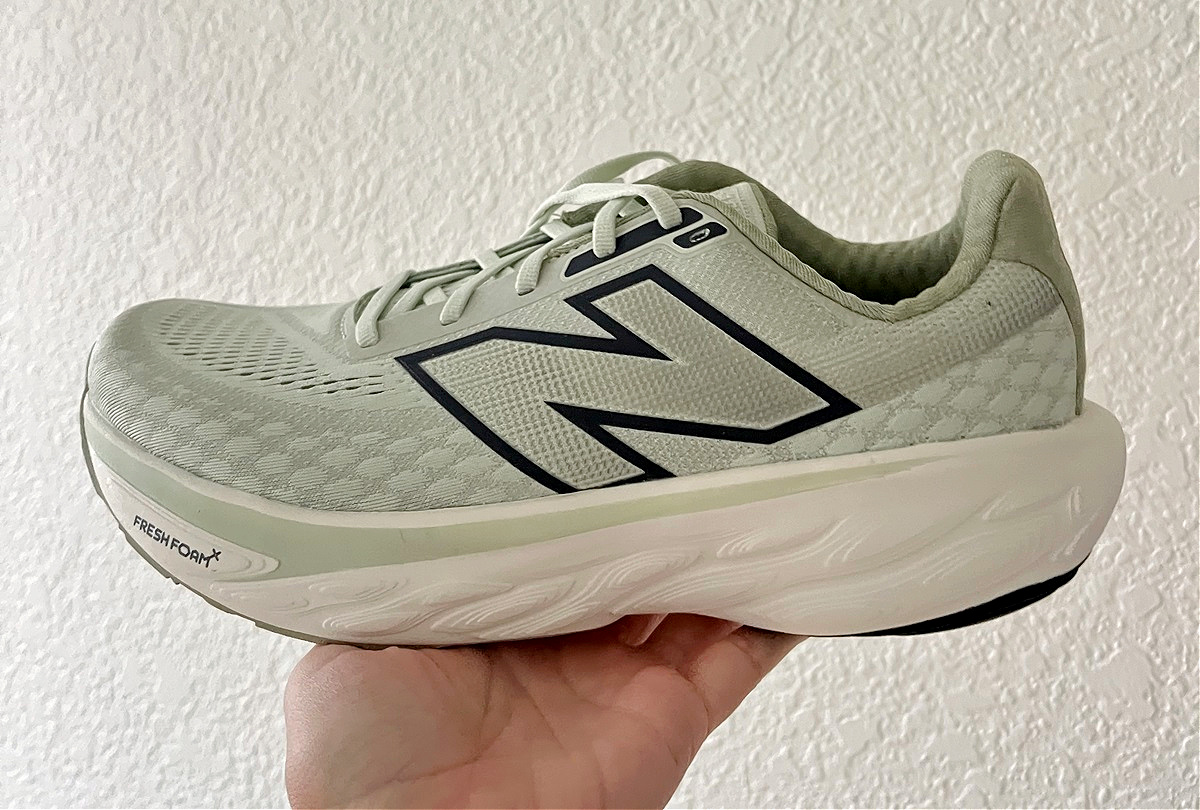
The base of the shoe is just slightly more flared or wider now, which also adds some stability. That’s a key feature that was lacking when many started shoving more foam into the midsole.
- Weight: 8.3 oz Women’s, 10.5oz Men’s
- Heel Drop: 6mm
- Available in 8 colors
- Available in wide and extra wide
- Available on NewBalance.com for $165
- Read our full review of the New Balance 1080 v14 >>
Best Shoes Daily Trainer- Saucony Ride
The Saucony Ride is a versatile neutral running shoe that provides a smooth ride for runners. It is designed for runners who want a neutral shoe with moderate cushioning, a responsive ride, and a comfortable fit.
It’s not flashy, it doesn’t have huge selling points, it’s just a trainer that feels pretty nice and will last!
While it’s not a stability shoe, we’ve always found the Ride to have some elements which inherently make it feel more stable.
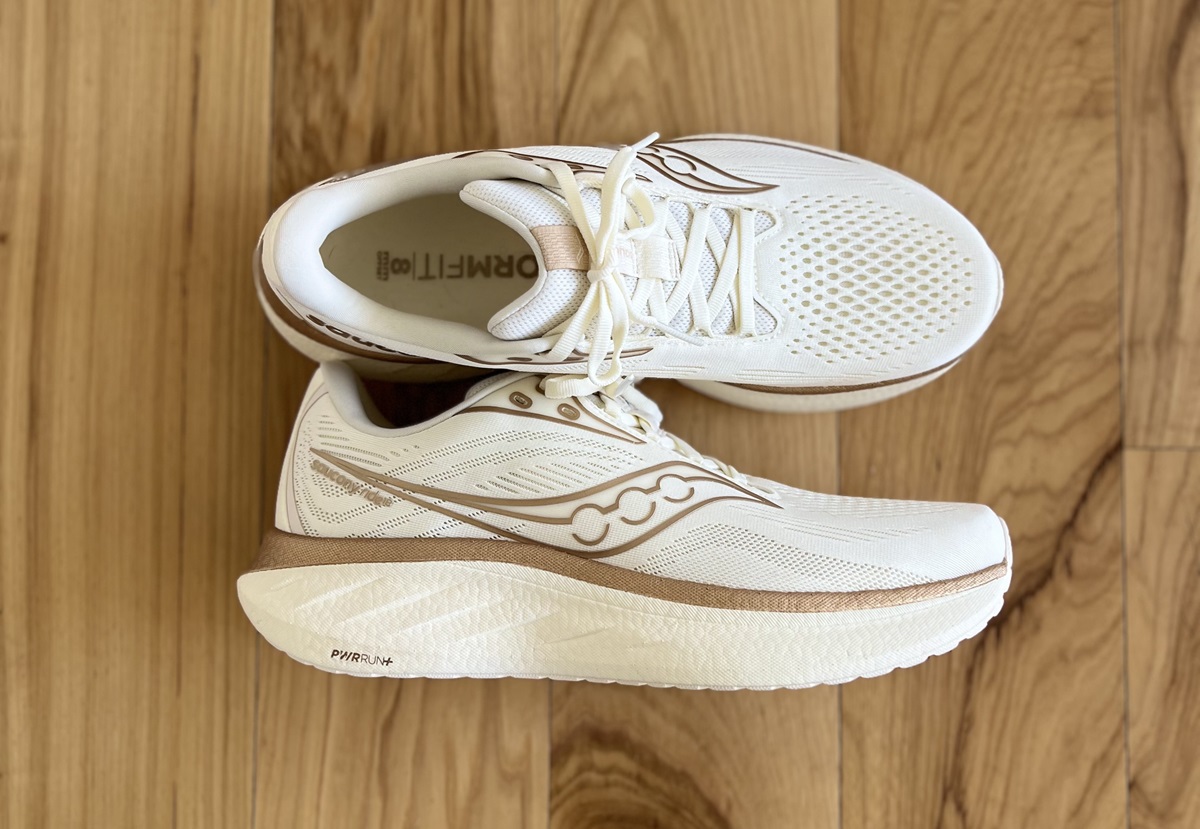
You could certainly do some speed work in this shoe, but it’s probably not what we’d reach for on those days. It doesn’t feel fast, but you aren’t held back by mounds of cushion either. Again, it reminds us of what ALL running shoes used to feel like, but with nicer cushion.
- Weight: 8 oz Women’s, 9.1 oz Men’s
- Heel toe drop: 8mm
- Available in 15 colors
- Available in Wide
- Available at Saucony.com $140
- Read our full review of the Saucony Ride 18 here >>
Best Shoes for Speed – Hoka Mach
When you’re ready to turn on the speed, the Mach is your HOKA of choice. It’s not a carbon fiber shoe, instead it’s a super lightweight shoe designed to spring off the ground and help you find that quick turnover.
The Mach features a lightweight foam midsole that provides a quick, lively feel, while the meta-rocker design helps to encourage a more natural gait.

This shoe is best for runners who are looking for a fast and responsive shoe to take on long-distance races or interval training. BUT that’s not to say this isn’t just a great daily trainer. It is not a carbon plate type speed shoe.
- Weight: 6.8 oz Women’s, 8.2 oz Men’s
- Heel Drop: 5 mm
- Available in 9 colors
- Available in Wide in some colors
- Available from Hoka.com for $140
- Checkout our full Hoka Mach 6 review here >>
Best Shoes for Mostly Treadmill Running – Brooks Ghost
The Brooks Ghost 17 still delivers everything a runner could ask for: just the right amount of cushion in midsole, a durable rubber outsole and a breathable mesh upper to keep your feet feeling comfortable mile after mile.
The change our team is most excited about is in the heel to toe drop.The Ghost 17 is a neutral running shoe now with a 10mm heel to toe drop.
It’s not a huge difference, but if the 12 mm felt too high, you’ll really appreciate this. Plus, the lower drop will make a difference in potentially reducing knee pain or IT Band issues that often pop up with newer runners.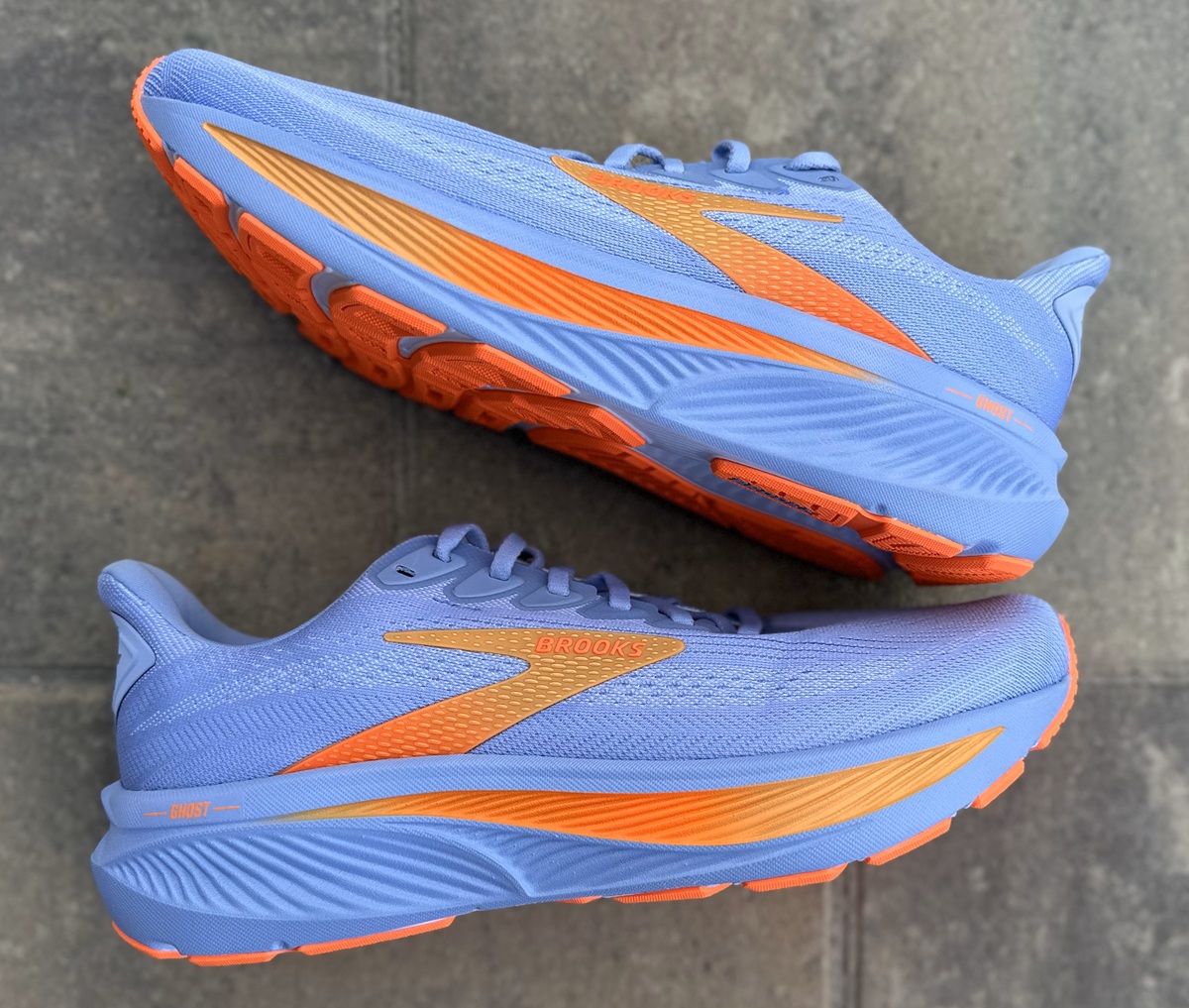 If you’re looking for a cushioned neutral shoe to use for running, run/walk intervals, or trying to get those daily 10k steps, the Ghost 17 is going to be a solid pick.
If you’re looking for a cushioned neutral shoe to use for running, run/walk intervals, or trying to get those daily 10k steps, the Ghost 17 is going to be a solid pick.
The Brooks Ghost 17 is a mix between soft and firm, like a shoe that you’d throw on when you want to hit party paces, but you also want to be able to get down to business.
They kept the same DNA Loft v3 foam but added more nitrogen to the heel and forefoot to give a little bit more of a pop and softer feeling underfoot. Now, there’s not enough pop that you’d grab these for a speed workout, or if you’re looking to run something like a fast 5k.
-
- Weight: 9.0 oz Women’s, 10.1 oz Men’s
- Heel toe drop: 10mm
- Available in 6 colors
- Available in Wide, Narrow and Extra Wide in select colorways
- Available from Brooksrunning.com for $150
- Read our full review of the Ghost 17 here >>
Best All Around Shoe for Beginning Runners – Nike Pegasus
The Nike Pegasus is a very popular shoe and has been for a long time. The latest model is no exception, boasting its familiar springy ride, neutral support, and comfort for your arches and toes.
Nike shoes tend to run narrow so even though these don’t have multiple widths, they tend to provide a snug fit for runners. This is not the most narrow of Nike running shoes that I have tried over the years, but again I think that can be a good thing to not create blisters.
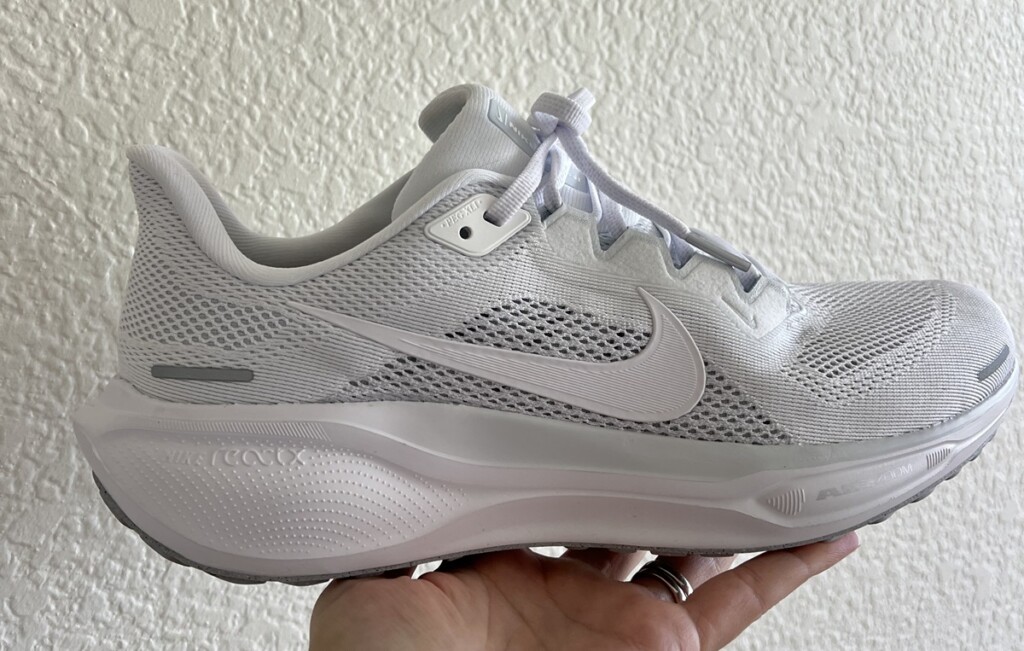
The Nike Pegasus has all the bells and whistles that a runner could ask for: just the right amount of cushion in midsole for maximum comfort, durable rubber outsole to withstand, and a breathable mesh upper to keep your feet feeling fresh and dry.
It’s been the go-to shoe for many whether you’re logging easy miles or running marathons. It’s known for its responsiveness thanks to 2 Nike Air Zoom units for an energized feel with each step.
-
- Weight: 8.6 oz Women’s, 10.4 oz Men’s
- Heel drop: 10mm
- Available in 18 colors
- Available in Extra Wide
- Find it here on Nike.com for $140, so you can enjoy their 30 day trial policy!
- Checkout our full review of the Pegasus 41 here >>
More tips on how to find cheap running shoes (totally know this is often a concern when we start!) >>
Best Lightweight Running Shoe for Beginners – Asics Gel Cumulus
Any time a shoe has made it up to version 27 I say something good is happening. That’s a sign that people are coming back again and again for that model, which should give you some comfort.
The outsole is made of rubberized EVA helping to provide a smooth ride. If you’re looking for something that isn’t following the max cushioned trend but still feels good, this is going to be a great option.
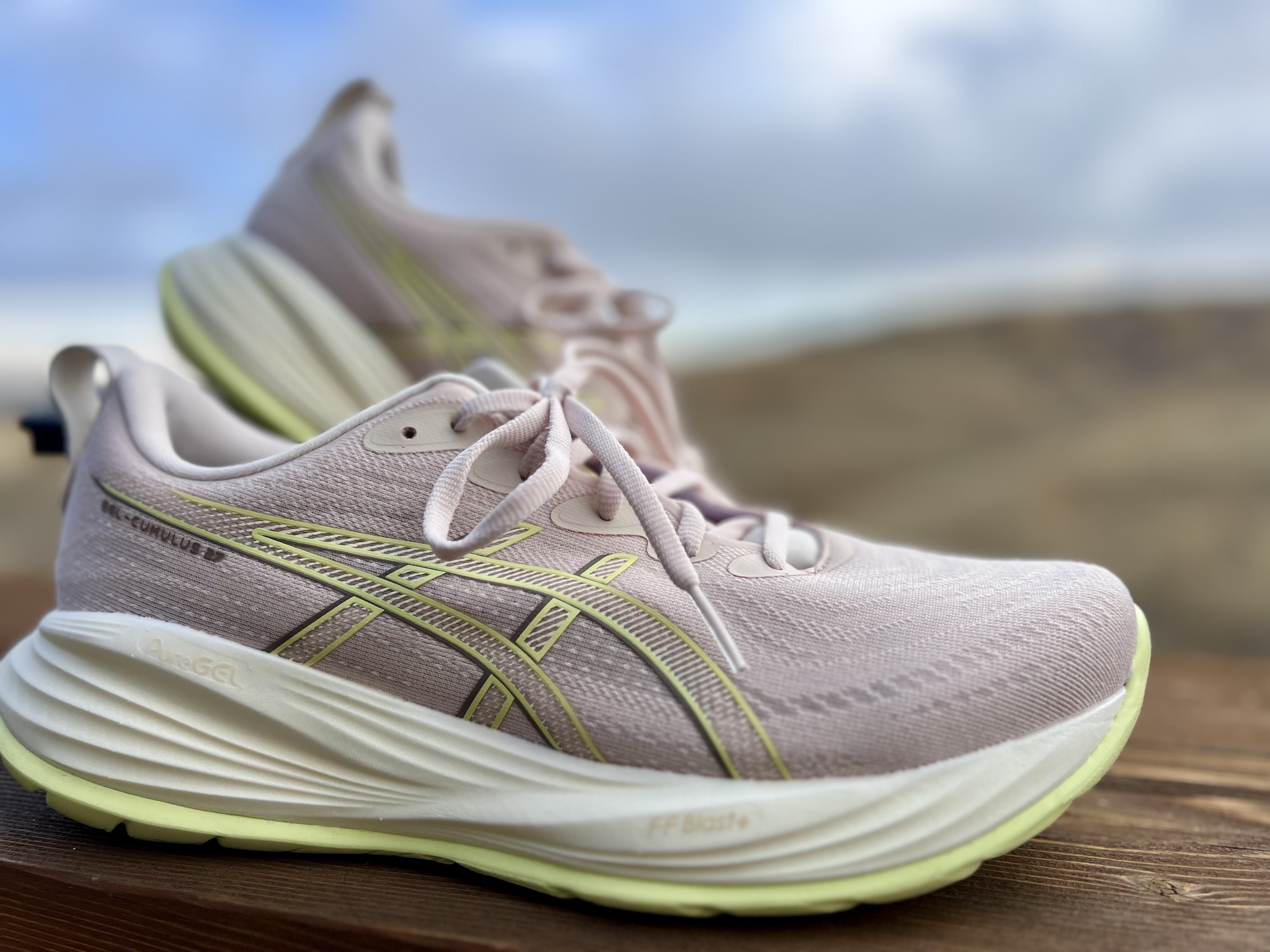
Think of the Cumulus as the sibling of the Novablast but just not as much pop. We think that it’ll be great for easy runs, long walks and heading out to run some errands.
An added bonus is it comes in numerous color combinations.
- Weight: 8.1 oz Women’s, 9.3 oz Men’s
- Heel toe drop: 8mm
- Available in wide in 2 color options (Black and beige)
- Available in nine colors
- Available at Asics.com and Zappos.com $140
- Read our full review of the Asics Gel Cumulus 27 here >>
Best Wide Toe box Shoe for Beginners – Topo Cyclone
When the toe box is your primary focus, this is a winning daily trainer.
My immediate thought upon picking this shoe up was “holy cow how is it so light?” When that’s the first thing you notice, it’s definitely going to be a fun shoe for some up speed workouts!
When you aren’t looking for a max cushion shoe (because we don’t always need that), but a shoe that’s light and still comfortable for the run, this is a great option. It doesn’t have a massive stack height, which means it is also a bit more stable for a lot of folks.
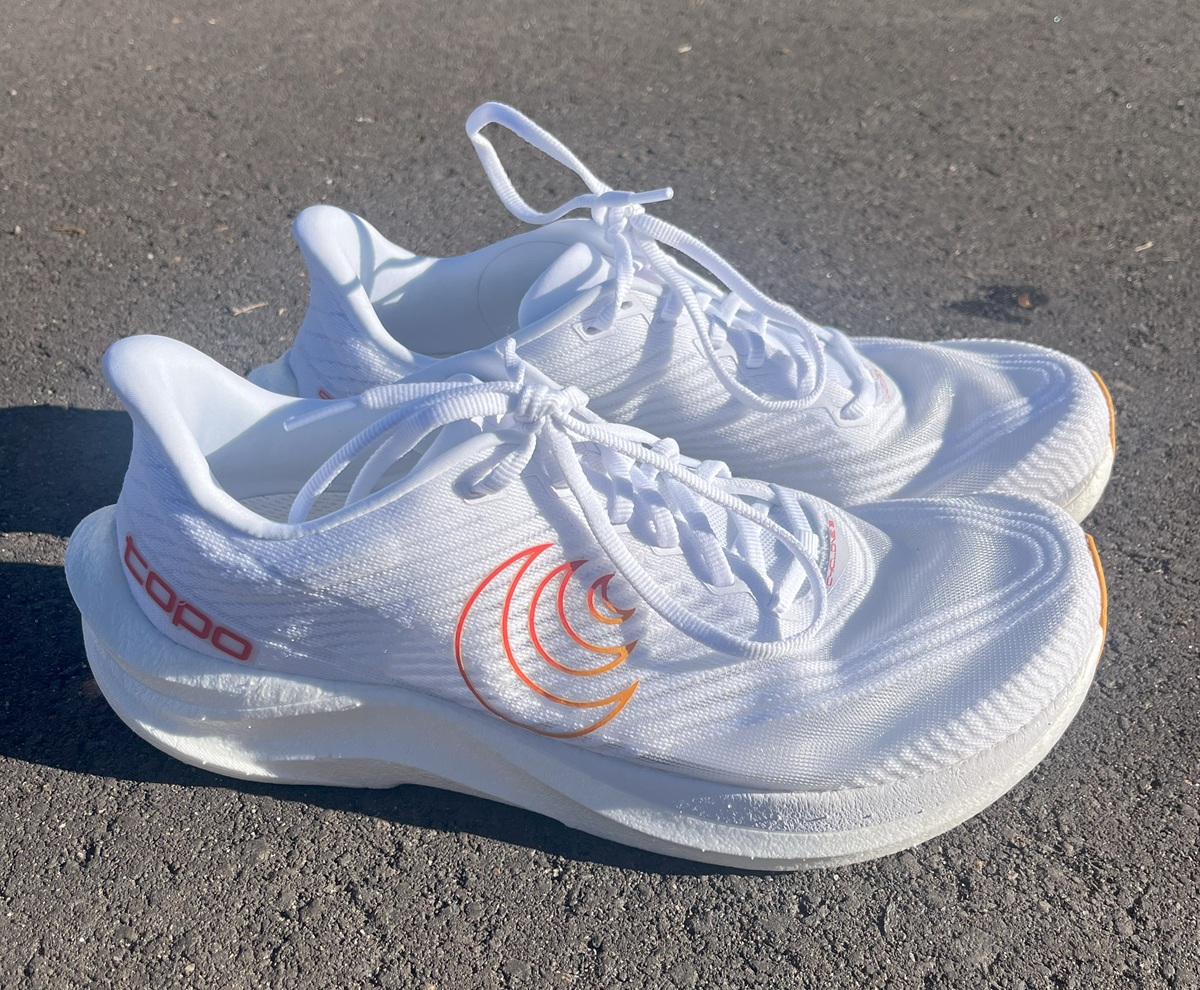
There is a slight rocker design to it, but I can’t say I noticed this much in my runs. I just thought was a nice sensible daily trainer that was a bit more responsive than a bigger cushion. If you want something for tempo runs, intervals, or even a race day light weight shoe this wide toebox will keep that big toe doing it’s job.
I also like the design of the bottom of the shoe. It provides some good drip so I could take it out on some low tech trails or days where I’m hitting both pavement and trail.
- Weight: 5.5 oz Women’s, 6.9oz Men’s
- Heel drop: 5mm
- Available in 2 colors
- Not available in wide
- Available at REI for $150
- Check out our full review of the Topo Cyclone 3 here >>
Best Zero Drop Running Shoes for Beginners – Altra Torin
The Altra Torin has emerged as a game-changer in the world of running footwear. A zero drop shoe that has enticed many to test out the lower heel drop running life!
As with all Altra shoes, you’ll enjoy the FootShape toe box. Their marketing is that this allows for a more natural foot movement, which is a yes and no. What it absolutely does is provide more room for your toes which can feel amazing AND allows for you to get more power out of that big toe by keeping it straight. Did you know your big toe provides a lot of umph in your stride?
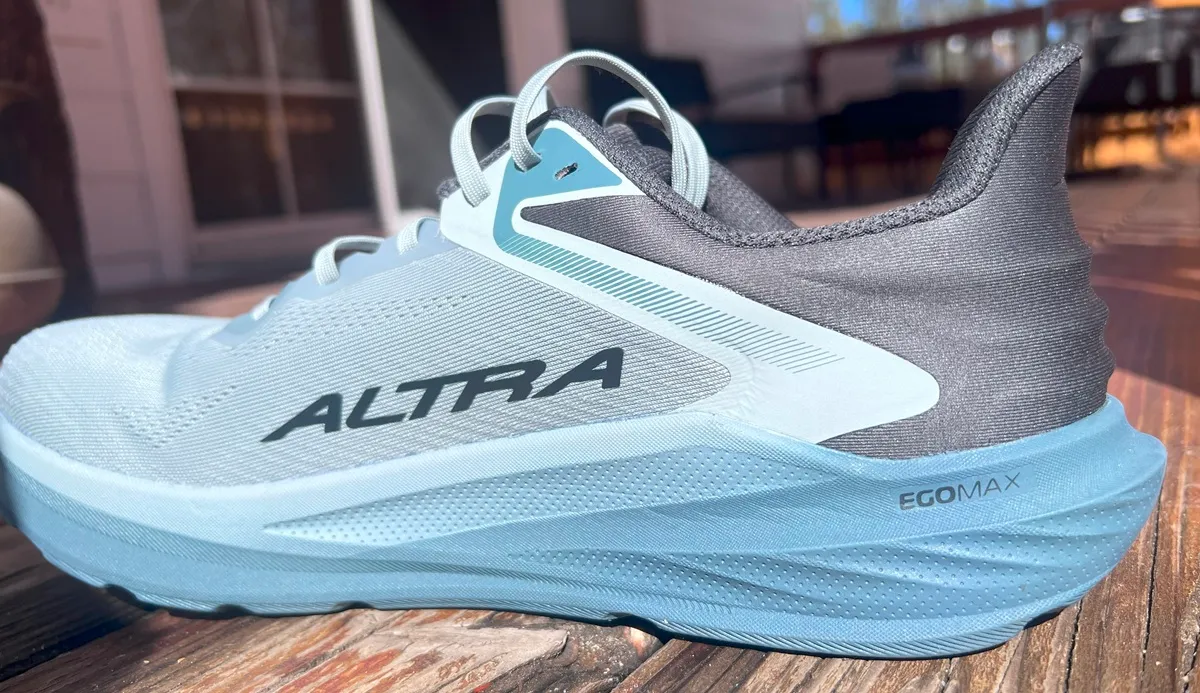
If you’re not used to running in a zero drop shoe, make sure that you ease your way into it. Start out with a few shorter runs and then increase the mileage.
- Weight: 8.4 oz Women’s, 10.15 oz Men’s
- Heel drop: zero drop
- Available in 7 colors
- Wide only available in black/white
- Available at Altra Running and retail stores for $150
- Read our full review of the Altra Torin 8 here >>
Best Trail Running Shoes for Beginners – Hoka Speedgoat
The Speedgoat has been a trail runner favorite for many years and is one we reach for time after time as well.
The Speedgoat has all of the cushion that you’ve come to love from my Hoka Cliftons and has all the grip and varied lugs I need to maintain traction on the trails. The Speedgoat also has a cushioned midsole that provides a smooth ride over rocks and other obstacles.
It is designed with a sturdy yet comfortable fit and features a Vibram MegaGrip outsole that provides excellent traction on both wet and dry surfaces.
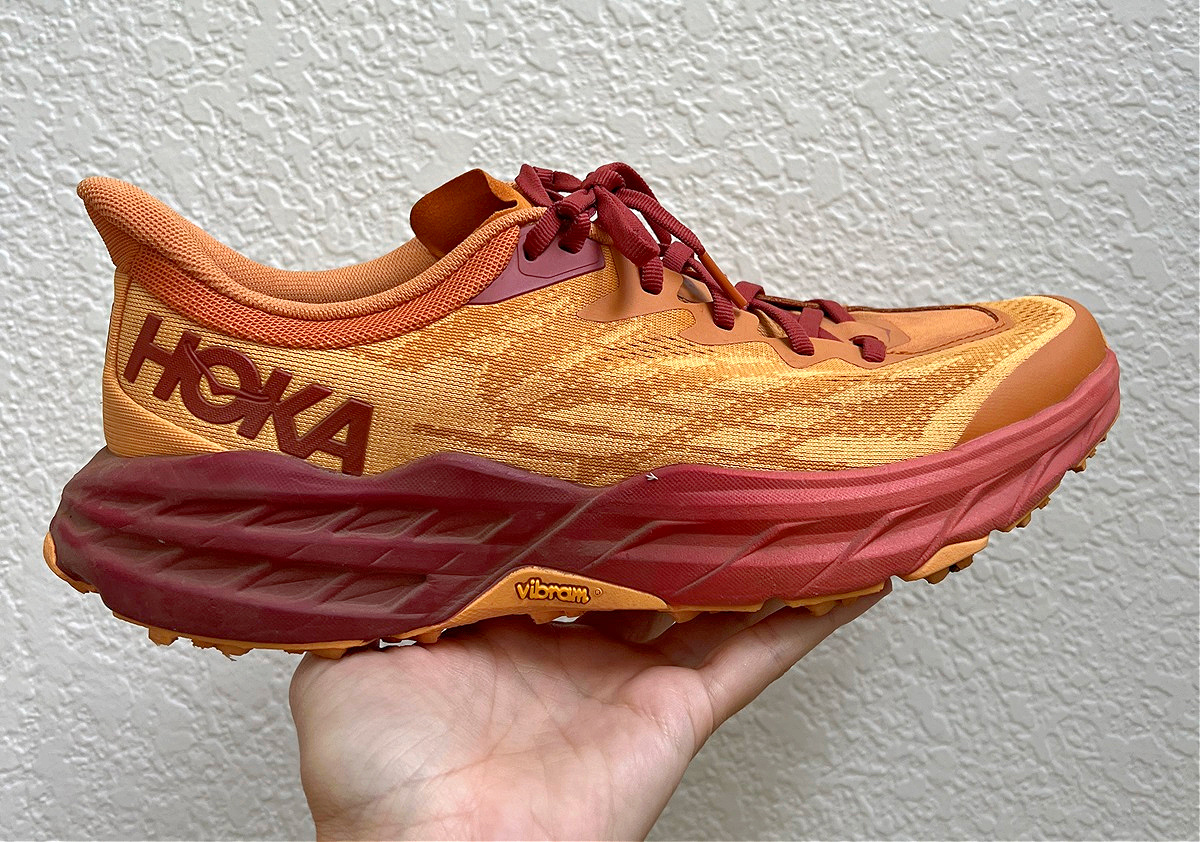
Loving how this neutral shoe feels and with a slightly wider toe box than many it’s meant no issues with blisters from downhill running. It’s also just a really great amount of cushion.
Comfy, but not too heavy for a nice long run either.
- Weight: 8.2 oz Women’s, 9.8 oz Men’s
- Heel Drop: 5 mm
- Available in Wide in some colors
- Available from Hoka.com for $155
- Read our full review of the Hoka Speedgoat 6 here >>
Obviously I’ve tested a ton of shoes over the years and recommended a LOT in various articles. Many of the ones you see here are recommended from my long runs to most cushioned and beyond. They are tried and tested shoes that are loved by many runners, which makes them a great place to start in finding the best beginner runner shoes for you.
A few more common questions I’ve gotten around shoes!
What To Look For In Beginner Running Shoes?
Do beginners need something different than experienced runners? Not inherently, no. They don’t yet need to worry about race day shoes or carbon plates, but do need to understand that footwear is worth the cost.
If budgets are tight, don’t worry about the GPS watch or the dry fit shirts, start with what you’re putting on your feet. This is going to make the runs feel better and ensure you aren’t soon sidelined with an injury from a cheap shoe that wasn’t providing the support you need.
Here are the key things we evaluated in selecting these shoes:
- Cushion – let’s face it, a great cushion just makes the run feel better
- Stability – while I don’t often recommend stability shoes, they can be very helpful starting out when you may have weaker hips and glutes that aren’t keeping your knees aligned
- Support – quality running shoes are going to provide your foot and arch with more support to move through the miles than a cheaper pair of shoes
- Durability – you might pay more for what you find in a running store than a department store, but they should last you longer as well
How Should Running Shoes Fit?
Fit is a key aspect of finding the right running shoe!!
Assume that you are going to want up to a full size bigger than your normal shoes. I started out in a 9.5 in 2002 and quickly moved to wearing size 11 as I started marathon training.
My feet didn’t grow, but while you run they do swell AND we want more room for the toes to prevent things like black toenails.
I’ve got a complete article on how to tell if running shoes fit properly that you should absolutely read. This is also going to help take in to account if you have an issue like bunions or flat feet.
Should Beginner Runners Wear Stability Shoes?
It’s not the worst idea. As noted above, I really love to get most people in to a neutral running shoe if possible because that won’t mask any underlying weakness in the hips, glutes or ankles.
However, on day one you’re trying to get the body used to the impact of this new activity while building strength so it’s not bad to have some extra support.
The key is to ensure you are doing the strength work and try rotating in a neutral shoe to your routine as soon as you can.
How Much Should I Spend on My First Pair of Running Shoes?
At this point, a good pair of running shoes is going to be between $130-$150 when buying this years model.
Those shoes should last you roughly 500 miles. That means if you’re running 3 days per week at 3 miles, that single pair would last you the entire year. Of course, we recommend that you rotate running shoes which will make them last longer, especially as you increase your runs.
AND make sure that you are NOT wearing your running shoes for other workouts.
Find out why you shouldn’t wear your running shoes casually >>
Other ways to connect with Amanda
Instagram Daily Fun: RunToTheFinish
Facebook Community Chatter: RunToTheFinish
Sign Up to Receive a Weekly Newsletter with Top Running Tips and Laughs



 What to Eat Before a Race: Best Carbs for Performance and Digestion
What to Eat Before a Race: Best Carbs for Performance and Digestion